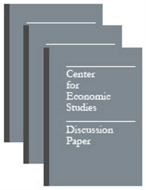
An official website of the United States government
Here’s how you know
Official websites use .gov
A .gov website belongs to an official government organization in the United States.
Secure .gov websites use HTTPS
A lock (
) or https:// means you’ve safely connected to the .gov website. Share sensitive information only on official, secure websites.
-
//
- Census.gov /
- Library /
- Census Working Papers /
- U.S. Trade in Toxics: The Case of Chlorodifluoromethane (HCFC-22)
U.S. Trade in Toxics: The Case of Chlorodifluoromethane (HCFC-22)
U.S. Trade in Toxics: The Case of Chlorodifluoromethane (HCFC-22)
Abstract
This paper explores whether environmental regulation affects where pollution-intensive goods are produced. Here we examine chlorodifluoromethane (HCFC-22), a chemical designated as toxic in 1994 by the U.S. Environmental Protection Agency’s Toxics Release Inventory (TRI). Trends show a decline in the number of domestic producers of this chemical, a decline in the number of manufacturing facilities using it, and an increase in the number (and share) of facilities claiming to import it. Transaction-level trade data show an increase in the import of HCFC-22 imports since its TRI listing – an increase that is faster than that of all non-TRI listed chemicals. This is suggestive of a pollution haven effect. Meanwhile, we find that the vast majority of U.S. imports of HCFC-22 come from OECD countries. However, an increase in the share of imports from non-OECD countries since the chemical’s listing suggests a shift of production to countries with more lax environmental standards. While the findings here are suggestive of regulatory effects, more rigorous analyses are needed to rule out other possible explanations.
Others in Series
Working Paper
Working Paper
Working Paper
Share
Related Information
Some content on this site is available in several different electronic formats. Some of the files may require a plug-in or additional software to view.
 Yes
Yes
 No
NoComments or suggestions?


Top

